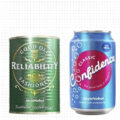Trends in can varnish purchases
Trends in the purchase of coatings for the metal packaging industry indicate a preference for products that comply with BPA-ni (unintentional Bisphenol A) legislation, which means that coatings manufacturers must provide certificates proving compliance with these regulations.
In addition, there is a continuous evolution in coatings to solve the challenges presented by the packaging industry, such as the need to can a greater diversity of products, including acidic foods, sulfurous foods and carbonated beverages. This drives the search for new packaging designs and materials.
The industry is polarized by the technology and research of leading companies in the United States, Germany and Great Britain, which over time license it to different countries. It is mentioned that the use of coatings on metal packaging has a long history and that developments in this sector continue to evolve, adapting to the characteristics of each packaged product and to the food legislation of the country of destination.
In summary, the trends point towards coatings that are safe for food contact, comply with specific regulations such as the absence of BPA, and are capable of protecting a wide range of packaged contents against corrosion and other types of chemical attack.
What are the world’s most worrying legislation for the purchase of coatings?
The legislations of most concern for the purchase of coatings, especially in the context of metal food packaging, are those related to the migration of chemicals from the coating into the food, and those focused on environmental protection. At the global level, the American FDA regulations and those of the European Common Market are of great influence. In addition, countries such as Switzerland and the Scandinavian countries have very rigorous and reliable regulations.
In particular, the restriction of the use of Bisphenol A (BPA) has generated significant changes in the coatings industry. Mention has been made of the trend to use varnishes that comply with BPA-ni (unintentional Bisphenol A) legislation, which implies that manufacturers must provide certificates proving compliance with these regulations.
Environmental concerns have also been highlighted, such as the emission of solvents during the curing of coatings and the search for alternatives to reduce this impact, such as the use of coatings with high solids content or reactive thinners.
Finally, there is a growing focus on sustainability and eco-design of products, which could include the revision of existing regulations and the introduction of new measures that would affect the metal packaging coatings and varnishes sector.
what is the future of can coating technology and purchasing?
The future of coating technology and purchasing seems to be focused on innovation and sustainability. Demand is expected to increase for customized or a la carte products, targeted to specific segments of the population and with functional ingredients. The industry faces the challenge of meeting these needs while maintaining a healthy nutritional profile and new textures, not to mention the needs of an increasingly aging society.
In terms of technology, it is anticipated that there will be significant advances in packaging testing processes and equipment, with increased automation of these processes and the development of new test methods to meet new materials or regulations. In addition, new forms of packaging that can improve the user experience and reduce waste are being explored, with a focus on design that is both functional and aesthetically pleasing.
With specific regard to varnishes and coatings, there is a growing interest in developing technologies that are more environmentally friendly and sustainable. The possibility of exploring plant-based or biodegradable coatings to improve the barrier properties of packaging materials, such as plastic and paper, while protecting the contents from external factors in a way that is less harmful to the environment and human health is mentioned.
In summary, the coatings industry is innovating to meet the demand for sustainable packaging that meets the goals of reducing costs, maintaining product quality and safety, and being better for the environment and consumers.















0 Comments